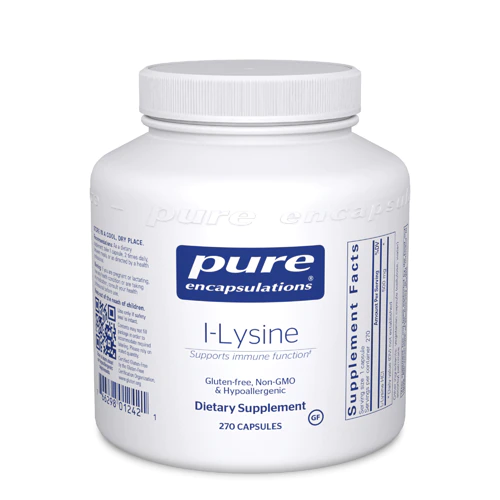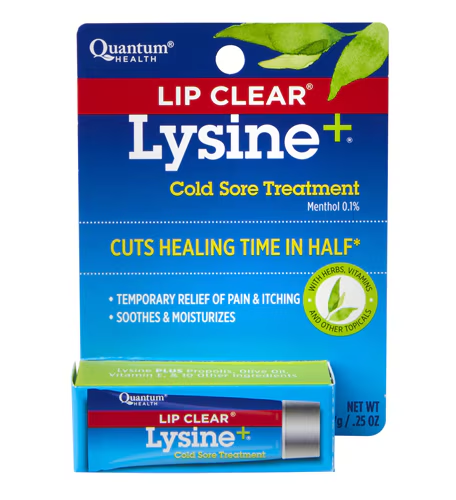A Comprehensive Guide to Understanding and Managing Cold Sores
- Jitka Burger

- Dec 6, 2024
- 4 min read
Do you often experience painful blisters on your lips or mouth? These cold sores are not only uncomfortable but also surprisingly common. Here’s everything you need to know to better understand, manage, and prevent them.

What Are Cold Sores?
Cold sores, also known as fever blisters, are caused by the Herpes simplex virus (HSV-1). By adulthood, about half of the U.S. population is infected, although many people are unaware, as they show no symptoms.
These sores usually appear as fluid-filled blisters on the lips, nose, or cheeks. For young children, they may develop inside the mouth, sometimes misdiagnosed as canker sores. After the blisters burst, they crust over and typically heal without scarring.
While cold sores are the most recognizable symptom of HSV-1, some people may also experience:
Fever
Headache
Muscle aches
Painful gums
Sore throat
Swollen lymph nodes
While there’s no cure, these sores often heal on their own. However, the HSV-1 virus lies dormant in nerve cells and can reactivate due to certain triggers, such as stress, illness, or hormonal changes, leading to recurrent outbreaks.
Risk Factors and Triggers
Cold sores spread through close contact, such as kissing or sharing utensils. They can also be triggered by:
Stress or Fatigue: Both weaken the immune system.
Hormonal Changes: Fluctuations during menstrual cycles can be a trigger.
Fever or Illness: The immune system's response can prompt an outbreak.
High-Arginine Foods: Certain foods can promote viral activity (see below).
Stages of a Cold Sore Outbreak
Tingling and Itching: A tingling, itching, or burning sensation lasts for 24 hours before a blister forms. This is the first sign of an outbreak.
Blister Formation: Small fluid-filled blisters appear, often in clusters, typically on day 1 or 2. At this stage, cold sores are highly contagious and may be painful.
Oozing and Crusting: Blisters burst around day 4, releasing fluid. Between days 5 and 8, the sores dry up, forming a yellow or brown crust that eventually flakes off. A cold sore will resolve within 2 to 6 weeks. 1]

Stages of a cold sore
Treatment and Prevention
Antiviral Drugs
While antiviral drugs like acyclovir may help shorten outbreaks, they often come with side effects such as nausea, vomiting, diarrhea, abdominal pain, headache, agitation, anemia, confusion, fatigue, hair loss, loss of appetite, even coma, 2] For HSV-1, natural remedies are often a safer and effective alternative.
Natural Remedies
Lysine Supplements: Compete with arginine, reducing the virus’s replication. High doses (3,000 mg/day) may prevent recurrence and improve healing. 3] 4]
Topical Applications: Options like propolis, zinc, or lysine-based creams can reduce healing time. 5] 6] 7] 8]
Vitamin C: Early application or intake may decrease symptom severity. 9]
Preventing outbreaks often involves managing stress, eating a diet low in arginine, and maintaining a strong immune system!
Diet for Cold Sore Management
High-Arginine Foods to Avoid
Arginine supports HSV replication, so limiting high-arginine foods can help reduce outbreaks. These include:
Nuts and Seeds: Pumpkin seeds, squash seeds, walnuts, almonds, sunflower seeds.
Legumes: Soybeans, raw peanuts, chickpeas.
Animal Products: Turkey, chicken, pork, beef.
Seafood: Shellfish and fish.
Other: Chocolate, seaweed.
High-Lysine Foods to Include
Lysine inhibits HSV replication, making lysine-rich foods beneficial for managing cold sores. Examples include:
Legumes: Lentils, kidney beans, black beans.
Grains: Quinoa, buckwheat, amaranth.
Vegetables: Potatoes, beets, leeks, tomatoes, green and red peppers.
Fruits: Avocados, pears.
Other: Seitan, cashews.
Including lysine-rich foods while reducing arginine-heavy options can support better management of cold sores.
Lifestyle Tips for Managing Cold Sores
Avoid High-Arginine Foods: Minimize nuts, seeds, soy products, chickpeas, chocolate, and animal proteins.
Include Lysine-Rich Foods: Focus on lentils, black beans, quinoa, potatoes, beets, tomatoes, and bell peppers.
Manage Stress: Stress is a common trigger. Practice meditation, yoga, or regular physical activity to keep stress levels low.
Boost Immunity: Eat a balanced, whole-food diet, stay hydrated, and prioritize sleep.
Final Thoughts
Cold sores are a common condition, but effective management can significantly reduce their frequency and severity. By understanding triggers, avoiding high-arginine foods, and incorporating lysine-rich options, you can take control of your outbreaks.
For more personalized advice or meal ideas tailored to your needs, feel free to leave a comment or reach out to us directly.
Resources: 1] https://www.ncbi.nlm.nih.gov/books/NBK482197/
2] https://www.rxlist.com/acyclovir/generic-drug.htm, Accessed December 5, 2024
3] Mailoo VJ, Rampes S. Lysine for Herpes Simplex Prophylaxis: A Review of the Evidence. Integr Med (Encinitas). 2017;16(3):42-46.
4] Griffith RS, DeLong DC, Nelson JD. Relation of arginine-lysine antagonism to herpes simplex growth in tissue culture. Chemotherapy. 1981;27(3):209-213. doi:10.1159/000237979
5] Rocha MP, Amorim JM, Lima WG, Brito JCM, da Cruz Nizer WS. Effect of honey and propolis, compared to acyclovir, against Herpes Simplex Virus (HSV)-induced lesions: A systematic review and meta-analysis. J Ethnopharmacol. 2022;287:114939. doi:10.1016/j.jep.2021.114939
6] Singh BB, Udani J, Vinjamury SP, et al. Safety and effectiveness of an L-lysine, zinc, and herbal-based product on the treatment of facial and circumoral herpes. Altern Med Rev. 2005;10(2):123-127.
7] Apisariyakulm A, Buddhasukh D, Apisariyakul S, Ternai B. Zinc monoglycerolate is effective against oral herpetic sores. Med J Aust. 1990;152(1):54. doi:10.5694/j.1326-5377.1990.tb124447.x
8] Saller R, Büechi S, Meyrat R, Schmidhauser C. Combined herbal preparation for topical treatment of Herpes labialis. Forsch Komplementarmed Klass Naturheilkd. 2001;8(6):373-382. doi:10.1159/000057255
9] Hovi T, Hirvimies A, Stenvik M, Vuola E, Pippuri R. Topical treatment of recurrent mucocutaneous herpes with ascorbic acid-containing solution. Antiviral Res. 1995;27(3):263-270. doi:10.1016/0166-3542(95)00010-j




